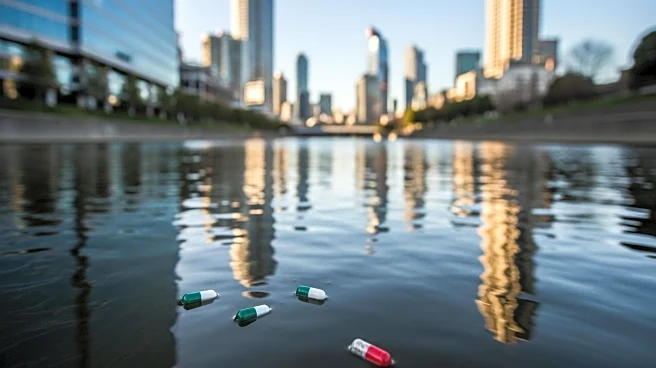What's Happening?
A recent study has revealed significant environmental hazards in Malawi's urban river networks due to pollution from antibiotics and resistance-driving chemicals (ARDCs). The research indicates that these pollutants are consistently found at levels exceeding safe limits, posing risks to human, animal, and ecological health. The presence of antibiotics and ARDCs in freshwater systems contributes to the maintenance and evolution of antimicrobial resistance (AMR). The study highlights the role of inadequate sanitation infrastructure and seasonal changes in rainfall in exacerbating the pollution levels, leading to increased exposure to pathogens and AMR risks.
Why It's Important?
The findings underscore the urgent need for improved waste management and environmental controls to mitigate the spread of AMR. The pollution of urban waterways with antibiotics and ARDCs not only threatens local ecosystems but also poses a public health risk by facilitating the spread of resistant bacteria. This situation is particularly concerning in regions with high infectious disease burdens, where antibiotics are crucial for treatment. Addressing these environmental challenges is vital for safeguarding public health and preserving biodiversity in urban areas.
Beyond the Headlines
The study calls for a One Health approach to tackle AMR, emphasizing the interconnectedness of human, animal, and environmental health. It suggests that improving sanitation facilities and implementing sustainable development strategies are essential for controlling AMR. The research also highlights the need for continuous environmental surveillance and community education campaigns to raise awareness about the risks posed by environmental pollution and promote risk mitigation strategies.










